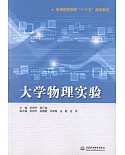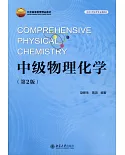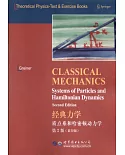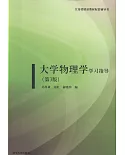CHAPTER 1 HOMOGENEOUS CATALYSIS -ADVANTAGES AND PROBLEMS
1.1 Catalysis
1.2 Catalyst Stability
1.2.1 THERMALLY INDUCED DECOMPOSITION
1.2.2 CHEMICALLY INDUCED DECOMPOSITION
1.2.3 PHYSICAL LOSS FROM THE PROCESS
1.3 Layout of the Book
1.4 References
CHAPTER 2 CLASSICAL HOMOGENEOUS CATALYST SEPARATION TECHNOLOGY
2.1.1 Coverage of Chapter
2.2 General Process Considerations
2.3 Everything is a Reactor
2.4 Overview of Separation Technologies
2.4.1 TRADITIONAL COBALT WITH CATALYST DECOMPOSITION
2.4.2 UNION CARBIDE-DAVY GAS RECYCLE PROCESS
2.4.3 LIQUID RECYCLE
2.4.4 BIPHASIC SYSTEMS; WATER-ORGANIC
2.4.5 INDUCED PHASE SEPARATION
2.4.6 NON-AQUEOUS PHASE SEPARATION
2.4.6.1 NAPS Using a Non-Polar Catalyst
2.4.6.2 NAPS Using a Polar Catalyst
2.4.6.3 Ligand Structure and Solubility Properties
2.5 Hypothetical processes-How Might the Producthe Separated from the Catalyst?
2.5.1 PROPENE HYDROFORMYLATION
2.5.2 1-OCTENE HYDROFORMYLATION
2.5.3 ALLYL ALCOHOL
2.5.4 METHOXYVINYLNAPHTHALENE
2.5.5 SEPARATION TECHNOLOGY FOR LESS STABLE CATALYSTS
2.5.5.1 Mitsubishi TPPO/TPP Separation
2.5.5.2 Organic Po lymer for Catalyst Stabilization
2.6 Real-World Complications
2.6.1 ORGANOPHOSPHORUS LIGAND DEGRADATIONS
2.6.1.1 Oxidation
2.6.1.2 Alkyldiarylphosphine Formation
2.6.1.3 Ligand Scrambling
2.6.1.4 Phosphine Reactions with Conjugated Systems
2.6.1.5 Phosphite Oxidation
2.6.1.6 Simple Phosphite Hydrolysis
2.6.1.7 Poisoning Phosphite Formation
2.6.1.8 Aldehyde A cid Formation
2.6.1.9 Acidity Control
2.6.2 SEPARATING BYPRODUCTS FROM REACTANTS OR PRODUCTS
2.6.2.1 Alkene Hydrogenation
2.6.2.2 Alkene Isomerization
2.6.2.3 Aldehyde Dimerization and Trimerization
2.6.2.4 Formation of Conjugated Carbonyls
2.6.3 INTRINSIC CATALYST DEACTIVATION
2.7 Further Separation Challenges.
2.7.1 RECOVERY OF METAL VALUES FROM A SPENT CATALYST
2.7.1.1 Catalyst Containment and Capture Technologies
2.8 Concluding Remarks
2.9 References
CHAPTER 3 SUPPORTED CATALYSTS
Immobilisation of Tailor-made Homogeneous Catalysts
3.1 Introduction
3.2 Short Historical Overview
3.3 Polystyrene Supported Catalysts
3.4 Silica Supported Catalyst
3.5 Catalysis in lnterphases
3.6 Ordered Mesoporous Support
3.7 Non-covalently Supported Catalysts
3.8 Supported Aqueous Phase Catalysis
3.9 Process Design [71]
3.10 Concluding Remarks
3.11 References
CHAPTER 4 SEPARATION BY SIZE-EXCLUSION FILTRATION
Homogeneous Catalysts Applied in Membrane Reactors
4.1 Introduction
4.2 Reactors
4.2.1 DEAD-END FILTRATION REACTORS
4.2.2 CROSS-FLOW FILTRATION REACTORS
4.3 Membranes
4.3.1 CLASSIFICATION OF FILTRATION TYPES
4.3.2 MEMBRANE MATERIALS
4.4 Dendrimer Supported Catalysts
4.4.1 KHARASCH ADDITION REACTION
4.4.2 ALLYLIC SUBSTITUTION REACTIONS
4.4.3 HYDROVINYLATION REACTION
4.4.4 HYDROGENATION REACTION
4.4.5 MICHAEL ADDITION REACTION
4.5 Dendritic Effects
4.6 Unmodified or Non-dendritic Catalysts
4.6.1 HYDROGENATION
4.6.2 PHASE TRANSFER CATALYSIS
4.7 Soluble Polymer Supported Catalysts
4.8 Concluding Remarks
4.9 References
CHAPTER 5 BIPHASIC SYSTEMS: WATER-ORGANIC
5.1 Introduction
5.2 Immobilization with the Help of Liquid Supports
5.2.1 GENERAL
5.2.2 BIPHASIC SYSTEMS
5.2.3 AQUEOUS BIPHASIC CATALYSIS
5.2.3.1 Water as a Solvent
5.2.3.2 Aqueous-phase Catalysis as a Unit Operation
5.2.4 EXAMPLES OF AQUEOUS BIPHASIC CATALYSIS
5.2.4.1 Itydroformylation (Ruhrchemie/Rh6ne-Poulenc[RCH/RP] process)
5.2.4.2 Other Industrially Used Aqueous-biphasic Processes
5.2.4.3 Short Overview of Other Reaction
5.2.5 OTHER PROPOSALS FOR WATER-BIPHASIC SYSTEMS
5.2.6 INTERLUDE-BIPHASIC SYSTEMS: ORGANIC-ORGANIC
5.3 Recycle and Recovery of Aqueous Catalysts
5.3.1 RECYCLING
5.3.2 RECOVERY
5.3.3 ECONOMICS OF THE PROCESS
5.3.4 ENVIRONMENTAL ASPECTS
5.4 Concluding Remarks
5.5 References
CHAPTER 6 FLUOROUS BIPHASIC CATALYSIS
6.1 Introduction
6.2 Alkene Hydrogenation
6.3 Alkene Hydrosilation
6.4 Alkene Hydroboration
6.5 Alkene Hydroformylation
6.6 Alkene Epoxidation
6.7 Other Oxidation Reactions
6.8 Allylic Alkylation
6.9 Heck, Stille, Suzuki, Sonagashira and Related Coupling Reactions
6.10 Asymmetric Alkylation of Aldehydes
6.11 Miscellaneous Catalytic Reactions
6.12 Fluorous Catalysis Without Fluorous Solvents
6.13 Continuous Processing
6.14 Process Synthesis for the Fluorous Biphasic Hydroformylation of 1-Octene
6.15 Conclusions
6.16 Acknowledgement
6.17 References
CHAPTER 7 CATALYST RECYCLING USING IONIC LIQUIDS
7.1 Introduction
7.1.1 INTRODUCTION T,O IONIC LIQUIDS
7.1.2 INTRODUCTION TO TRANSITION METAL CATALYSIS IN IONIC LIQUIDS
7.1.3 MULTIPHASIC CATALYSIS WITH IONIC LIQUIDS-ENGINEERING ASPECTS
7.2 Liquid-liquid Biphasic, Rh-catalysed Hydroformylation Using Ionic Liquids
7.3 Rhodium Catalysed Hydroformylation Using Supported Ionic Liquid Phase SILP) Catalysis
7.3.1 SUPPORTED IONIC LIQUIDS BY CHEMICAL BONDS
7.3.2 SUPPORTED IONIC LIQUIDS BY IMPREGNATION
7.4 Costs And Economics
7.5 Conclusions
7.6 References
CHAPTER 8 SUPERCRITICAL FLUIDS
Compressed Gases as Mobile Phase and Catalyst Support
8.1 Introduction to supercritical fluids
8.2 Applications of scCO2 in Catalyst Immobilisation
8.2.1 CO2 AS THE ONLY MASS SEPARATING AGENT
8.2.2 BIPHASIC SYSTEMS CONSISTING OF CO2 AND LIQUID PHASES
8.2.2.1 Water as the Liquid Phase
8.2.2.2 Poly(ethyleneglycol) (PEG) as the Liquid Phase
8.2.2.3 lonic Liquids as the Liquid Phase
8.2.3 BIPHASIC SYSTEMS CONSISTING OF COe AND SOLID PHASES
8.2.3.1 Inorganic Supports
8.2.3.2 Organic Polymer Supports
8.3 Economic Evaluation and Summary
8.3.1 POTENTIAL FOR SCALE-UP
8.4 Summary
8.5 References
CHAPTER 9 AREAS FOR FURTHER RESEARCH
9.1 Introduction
9.2 Conventional Separation Methods (See Chapter 2)
9.3 Catalysts on Insoluble Supports (Chapter 3)
9.4 Catalysts on Soluble Supports (Chapter 4)
9.5 Aqueous Biphasic Catalysis (Chapter 5)
9.6 Fluorous Biphasic Catalysis (Chapter 6)
9.7 Reactions Involving Ionic Liquids (Chaoter 7)
9.8 Reactions Using Supercritical Fluids (Chapter 8)
9.9 Conclusions
9.10 References




























